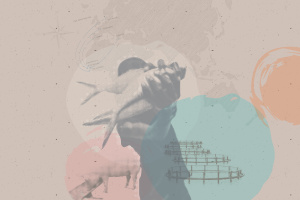Until the Seas Run Dry: How industrial aquaculture is plundering the oceans

As we gradually take stock of the full extent of the devastation humankind is wreaking on our planet’s oceans and life therein, this report takes a critical look at one of the most wasteful industries currently plundering the seas: industrial aquaculture and its use of wild-caught fish for feed.
Through a comprehensive review of the latest scientific research on the impacts of reduction fisheries on marine ecosystems, an examination of the geographies of destruction in which fishmeal and fish-oil (FMFO) production take place, and a brief analysis of some of the major corporate players behind the expansion of the aquafeed industry into a multi-billion-euro business, this report will show how current market dynamics are fundamentally broken. Grinding wild fish into FMFO to feed a growing aquaculture industry raises concerns of overfishing, poor animal welfare and disruption of aquatic food webs; it also undermines food security, as less fish is available for direct human consumption. Given the rapid growth of the sector, it is clear that the aquaculture industry’s business-as-usual approach is pushing marine resources beyond planetary boundaries and disregarding the welfare of hundreds of billions of sentient animals.
Aquaculture: Is the cure worse than the disease?
Aquaculture is the fastest-growing segment of the food-production sector, accounting for roughly half of world fish consumption. Proponents of the industry claim aquaculture has the potential to deliver affordable, healthy protein with a low carbon footprint, and could provide a way of diverting pressure from wild-capture stocks, which have been systematically overfished for decades. However, the industry is failing to deliver on this promise due to its continued reliance on wild-caught fish; almost a fifth of the world’s total catch of wild fish is processed into FMFO, of which 69% of fishmeal and 75% of fish-oil production are used to feed farmed fish.
The Food and Agriculture Organization of the United Nations (FAO) projects that aquaculture will produce 109 million tonnes of fish, providing 60% of the world’s fish consumption, by 2030. The growing demand for carnivorous farmed fish, and the trend of feeding FMFO to non-carnivorous fish to speed up growth cycles, is reflected in FAO projections that fishmeal production will be 19% higher in 2030 than in 2016. The business-as-usual scenario therefore places sustained pressure on wild fish populations to feed farmed fish.
At this critical juncture, this report takes stock of the impacts that intensive aquaculture is already having on the marine environment and food chains, as well as on the food security and wellbeing of vulnerable coastal communities, and proposes a more sustainable way forward by eliminating the industry’s reliance on wild-caught fish.
PARTNERS


You might also like...

Feeding a Monster: How European aquaculture and animal industries are stealing food from West African communities
This report uncovers how each year, over half a million tonnes of wild-caught fish are taken out of the oceans around West Africa and ground down into fishmeal and fish oil to feed farmed fish and animals.

Caught Out: How UK retailers are tackling the use of wild fish in their aquaculture supply chains
This report scores the top 10 UK supermarkets to assess how effectively they are addressing the ocean sustainability implications of the farmed seafood they sell, which remains largely reliant on the use of ...

Atrapados: Cómo los supermercados españoles abordan el empleo de pescado salvaje en su cadena de suministro acuícola
This report looks at how effectively Spanish supermarkets are safeguarding the health of the oceans, through the sustainability of their farmed fish supply chains. Read our Spanish language report: